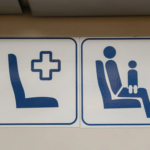JPEG is one of the most widely used image file formats mainly known due to its balance between file size and quality. However, like any digital file, you may encounter corruption issues in your JPEG images, making your pictures inaccessible. If you ever experienced such instances, it is important to understand the exact reason for this corruption and adequate workarounds to fix it. This comprehensive guide will explore the common causes of JPEG file corruption and 05 proven methods to fix corrupted JPEG files.
Common Reasons Why JPEG Files Appear Corrupted
Before you apply JPEG repair methods to fix corrupted or damaged JPEG images, it’s important to find the exact cause of such corruption. There are many reasons why JPEG files usually get corrupted, some of them are:
- File Transfer Errors: Interruptions during file transfer, like sudden power outages or improper ejection of storage devices, can corrupt JPEG files.
- Virus or Malware Attacks: Malicious software, like viruses or malware, can infect the stored image files on your device and may corrupt or damage them.
- Bad Sectors on Storage Media: Bad sectors on Hard drives, SD cards, or other storage media can also cause file corruption or make stored image files inaccessible.
- Software Bugs: Glitches in the device OS or installed software applications used to view, edit, or transfer images can cause corruption.
- File System Errors: Issues with the file system of the storage media can also corrupt files stored on it.
How do I Repair Corrupted JPEG Files?
Now, it’s time to learn various repair techniques, including photo repair software and manual workarounds, which you can apply to fix corrupted JPEG images. Go with the below-given 05 proven photo repair methods one-by-one to access your corrupted memories again:
Method 01: Change the Image Format
Sometimes, your photo viewer might show an error especially while opening JPEG files. In such cases, you can try opening them in some other format. To change the file format of your JPEG photo using Windows’ in-built Paint tool, you need to:
- Launch the Paint tool and open your corrupt image in it.
- Go to File > Save as and then select the format in which you need to save your image.
- Click the Save button to save the changes.
Method 02: Perform CHKDSK Scan
You can use Windows built-in Command Prompt (CMD) utility to fix corruption issues by running a disk check. This command basically scans and fixes the bad sectors on the storage drives. All you have to do is:
- Press the Windows + R keys to launch the Run prompt.
- Type CMD and press the Enter key to open the Command Prompt.
- Now, type the command CHKDSK (drive-name) /r and press Enter.
After completion of the scan process, restart your device and check if you can open JPEG files flawlessly.
Method 03: Repair Corrupt JPEG Image with HEX Editor
Though using a HEX editor for repairing a corrupt JPEG file is a more advanced technique, this method is very helpful. You can manually edit the hexadecimal data of your corrupt JPEG file to get rid of corruption. Some of the most common hex editor tools available are HxD, Hex Workshop, Cygnus, Neo, etc. For this:
- Firstly, you need to download and install a Hex editor on your device.
- Now, open your corrupt JPEG file in the hex editor. Also, open a similar non-corrupted JPEG file.
- Copy the header data from the working file and paste it into the corrupted file.
- Save the repaired JPEG file with a new name.
Method 04: Try the Windows Error Checking Tool
You may not know that Windows OS provides an in-built Error-checking tool, which you can use to repair corrupted/damaged JPEG files. Follow the below-given steps to run this test:
- Press the Windows + E keys to open File Explorer. Right-click on the storage space where your corrupt JPEG image was stored and select Properties.
- Go to Tools and then click the Check button.
- From the menu that appears, select the Scan Now option and wait till the tool detects and fixes any potential error, if found.
After successfully completing the above process, restart your PC and check if your image appears.
Method 05: Use Third-Party Photo Repair Software
If the above-mentioned proven methods to fix corrupted JPEG files get failed and you are still unable to access your photos, don’t worry! It’s time to use JPEG repair software, like Stellar Repair for Photo, which allows easy and quick repairing of corrupt pictures in no time. This professional photo repair software can repair image files corrupted due to multiple reasons, such as colour distortion, blurriness, ghost images, strange artefacts or more.
Key Features of Stellar Repair for Photo Tool:
- The software supports the repairing of images of multiple formats, including JPG, JPEG, PNG, BMP, GIF, etc.
- It can easily repair images taken from your smartphone and DSLR camera brands like Sony, GoPro, Canon, etc.
- Allows you to preview the repaired photos after completion of storage scanning.
- Compatible with both Windows and Mac devices. The software is a 100% safe and secure tool to easily repair corrupt photos.
Steps to repair corrupted JPEG files using the Stellar Repair for Photo software:
Step 1: Download and install the Stellar Repair for Photo tool on your Windows device. Launch the software and click the Add File button to upload the corrupt JPEG images that you need to repair.
Step 2: Click the Repair button and wait till the repairing process is completed.
Step 3: Preview the repaired photos and click the Save Repaired Files button to save the repaired photos at the desired location.
That’s it! Once done, check the repaired JPEG photo from the location where you’ve saved it.
Wrapping Up
Corrupted JPEG images can be a significant inconvenience, but with the above-mentioned 05 proven methods to fix corrupted JPEG files, you can easily repair them. Whether you are using built-in tools or any third-party photo repair software like Stellar Repair for Photo, the key is to act promptly. Additionally, taking preventive measures like having regular backups, installing reliable Antivirus applications, safely ejecting drives, etc., will help you to easily avoid future instances of file corruption.









